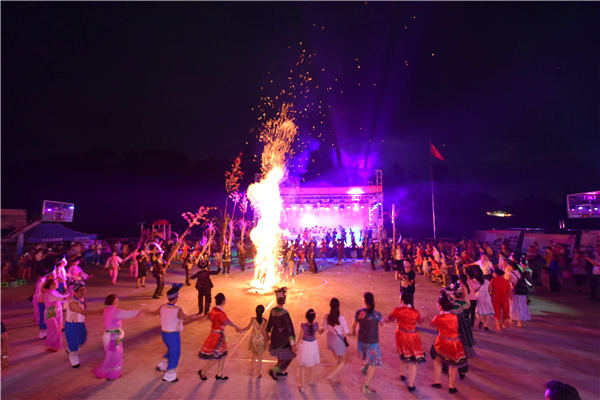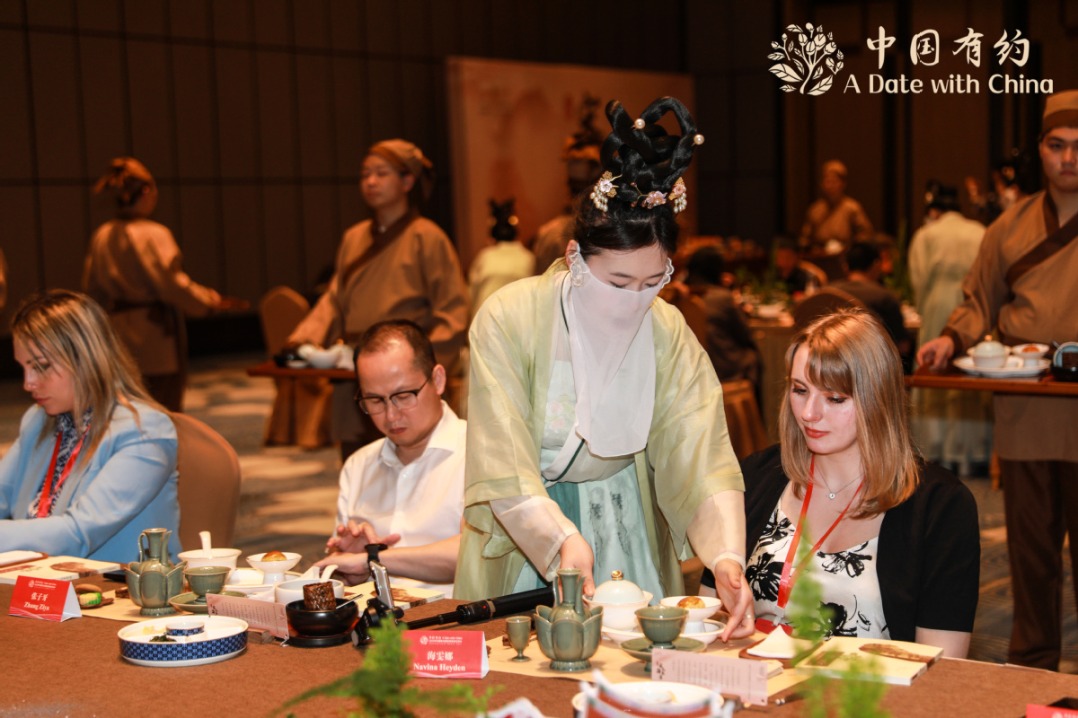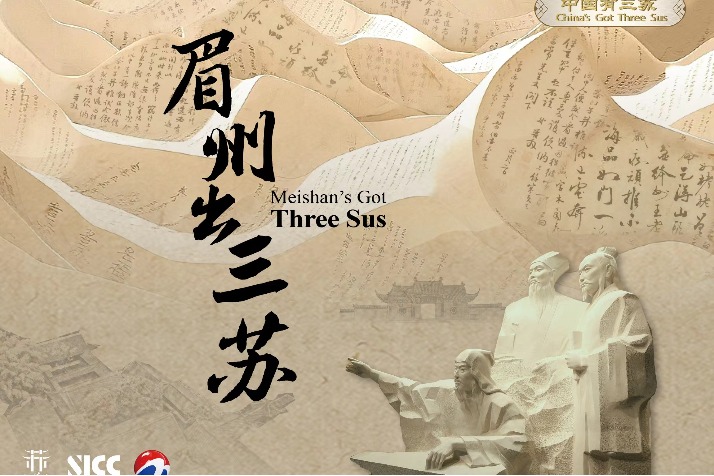Southern villages fuel tourism through folk customs


Villagers in Shuangletun dance with tourists at a bonfire party. [Photo provided to China Daily]
Now, as tourism booms, the lives of the locals have also changed for the better.
"We lived in simple shed made of wood and grass, and survived by hunting and growing millet," Wei recalls.
Annual per capita income barely hit 500 yuan.
Now, however, locals have moved into spacious brick houses and developed an orange plantation and a duck-raising business.
"Travelers will pick fruit in the orange garden and taste the duck, chicken and other fare cultivated by the farmers," Wei says.
Many villagers who used to work in cities have returned home, and annual per capita income has surpassed 10,000 yuan.
Shuangletun is only one part of the Huanjiang government's efforts to use the pristine natural environment and rich ethnic elements to develop tourism and improve local residents' lives.
"We have lush forests, karst landscapes, waterfalls and historical sites," says Huang Rongbiao, Party secretary of Huanjiang county.
The unique songs and dances of Maonan people were recognized as a "living fossil of Chinese opera and national cultural heritage" in 2006.
The Huanjiang government is working on the development of two highly rated national scenic spots. The goal is to turn Huanjiang into an international destination, Huang says.
Wei is in charge of ethnic-dance trainings and rehearsals on Friday and Saturday nights.
The trainees are as young as 6. The oldest are in their 40s.
"We want to improve villagers' literacy and carry on Miao singing and dancing," Wei says.
- News
- HKSAR govt welcomes policy of visa-free entry via cruise ships at coastal provinces
- Visa-free entry allowed for tour groups at all cruise ports
- China fully allows visa-free entry of foreign tourist groups via cruise ships
- China's visa-free policy ignites European enthusiasm and enhances exchanges




